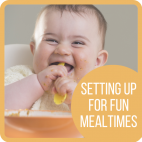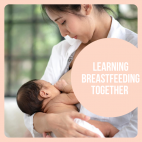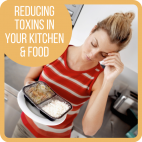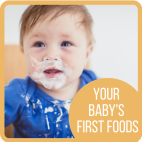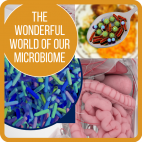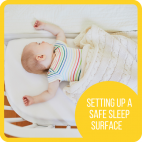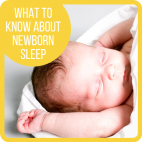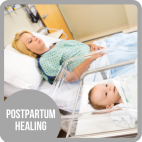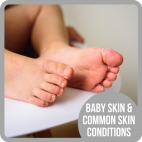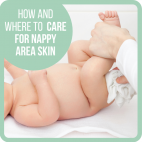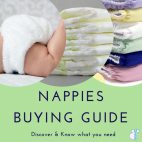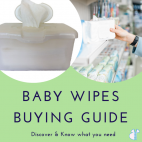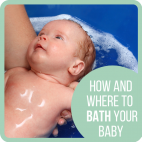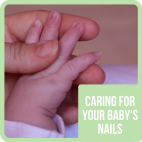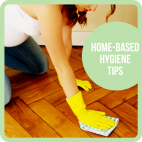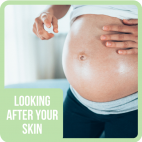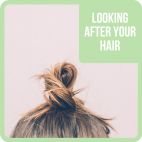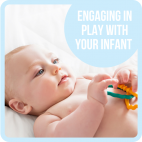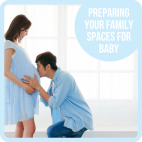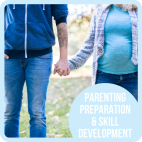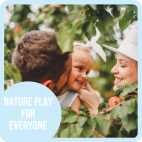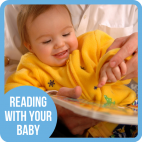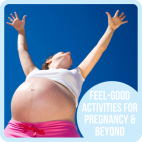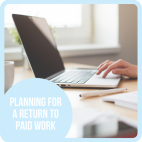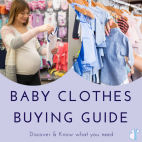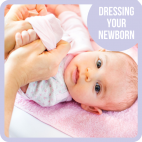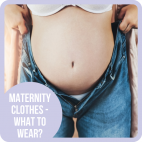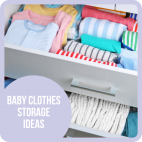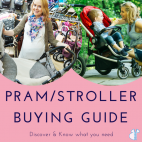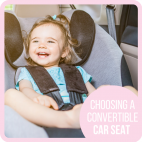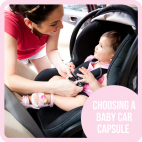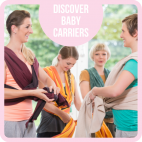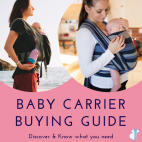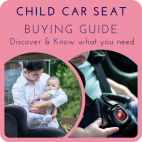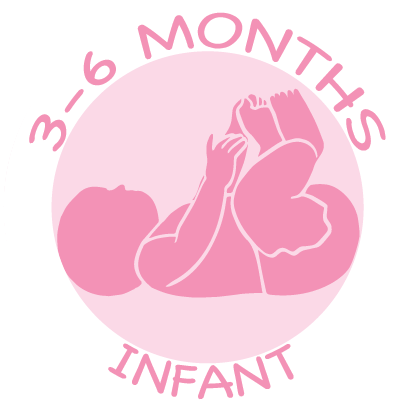
Your Interactive Infant on a Roll
By now, you and your baby know each other pretty well and are confident and familiar with the basics like feeding, bathing, dressing and changing. You have some predictability in your daily routines between naps, feeds and longer periods of playtime. Any reflux and colic may be starting to settle down. They are growing fast, and gaining strength, body awareness, coordination, and improved vision each day.
Your baby needs lots of opportunities to practice their skills, to build strength and coordination. Once their necks are stronger, they can start to use their arms when on their stomach to lift and turn their body on the spot. They can then move their legs to push themselves up into a sitting position and sit with support until they get stronger in their core muscles, working towards sitting independently. This is also when they discover their feet and have the core strength to lift their legs to grab their feet with their hands (so much fun during nappy changes!).
Your baby still needs you to provide the security and reassurance to form a strong primary bond (known as a secure attachment). Having that relationship based on trust, love, and respect is important for their social development, sense of self and confidence. As the caregiver, this level of responsibility and responsiveness can leave your needs unmet. Although it is great to talk to your baby, they aren't the best conversationalists, and you will need contact with other adults to fulfil your social needs. The best way to get this is through co-parenting, involving your family, mother's or parents groups, going for walks and going to public spaces such as the park or shopping centre as part of your regular and daily routines. The connections you form around yourself also has many benefits for your baby.
By the end month of this phase, your baby may be showing signs of being ready to start on some solids. This is an exciting milestone for parents and babies to start exploring new tastes, textures and how to use their tongue to move food around their mouth and swallow. Although you may be excited by the idea of your baby taking in more food and less milk, for your baby, it may be more about exploration and play than actually eating. It should be fun and social, and it's going to get messy!
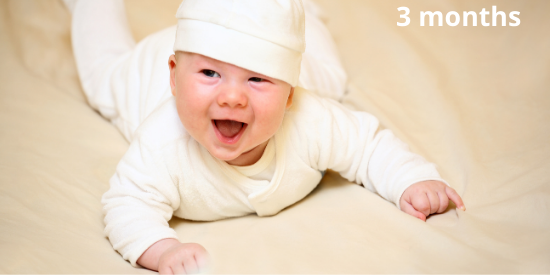
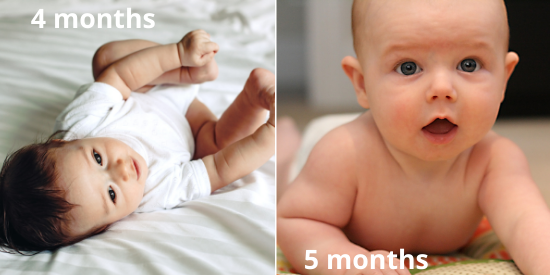
After 3 months of milk feeds, both you and your baby have become settled into a more predictable pattern of feeding. That is, unless they are going through a growth spurt or developmental leap. During these times, suddenly your baby can want to feed what seems like constantly. Although your baby is unlikely to have any teeth erupt for some time, you can start to look out for the first signs of teething. Teething can affect everything from feeding, sleeping, nappies and your baby's temperment for play.
As your body continues to recover from pregnancy, it will help to be taking in quality and consistent nutrition and an increased water intake. This is doubly true if you are breastfeeding so your body can keep up with the energy demands of breastfeeding and lessen the impact of postnatal depletion. If you are wondering what postnatal depletion looks and feels like, Dr Oscar Serralach's describes it in his book "The Postnatal Depletion Cure". For more information, The Australian Breastfeeding Association (ABA) has a great summary of diet and weight loss while breastfeeding here & information on how breastmilk is made.
Some foods in breastfeeding mothers diets are known to upset babies by causing digestive problems. Other foods are thought to boost breastmilk production (lactogenic foods, also known as ‘Galactoagogues’). This can be a learning curve for mothers to figure out if there is a link between what she eats and her baby’s behaviour - another way that mother and baby are bonded during breastfeeding. The ABA has information on breastfeeding and food sensitivities as well as maternal caffeine consumption. If you are breastfeeding and want to have some alcoholic beverages, The ABA offers a free app called Feed Safe that helps you track your alcohol intake and can tell you when it should be safe for the next breastfeed. They also have information on alcohol and breastfeeding here.
If you are breastfeeding exclusively and want to start bottle feeding expressed milk, there are several items that might be on your shopping list, as well as a bit of a learning curve. The main advantage of pumping is to have the option for someone else to feed your baby either occasionally or regularly. The disadvantage is the process of having to pump, store, defrost, heat, sterilize the bottle/teat and then bottle feed. You can do this with minimal equipment, or choose to buy equipment such as a breast pump and bottle warmers to make this process easier and quicker.
Mixed feeding is where parents use formula to partially supplement breastmilk feeds. Mixed feeding may be necessary or a choice you make for many reasons. To mix feed, you need the equipment to breastfeed and the equipment for regular formula feeding. Formula feeding comes with decisions around which formula to use, which bottles and teats are best for regular use, containers for storing portions of formula, a way to warm the mixture and a steriliser for the bottles and lids.
For occasional expressed milk feeding, hand expression may be fine, or a manual breast pump could do the job. Electric breast pumps are more expensive, so you can look at hiring one, borrowing one or buying one. When you start pumping, you also need storage bags and bottles. There are also plenty of other products which can be nice to have such as sterilisers, bottle warmers and automatic bottle makers.
This is the perfect time to start preparing yourself to start the 'weaning' process at around the 6 month mark and start gathering the items to make the process easier for everyone. Feeding items you might want to buy for starting solids might include a high chair or supportive seat, small spoons, small containers, bibs, and a straw or sippy cup.
Milk is a complete food which should be the main source of nutrition and hydration for your baby during this time up to 12 months. It will be entirely up to you and your baby when the right time is to start on the first foods and you can keep an eye out for when your baby is displaying certain skills and developmental milestones which indicate they are ready for first foods. In saying this, it is recommended not to start before 4 months with the WHO recommendation to start solids from 6 months. Having realistic expectations of your baby's abilities and just how long it takes for them to develop feeding skills helps A LOT. This is just the first steps in a years-long process, so patience will be needed as well as tolerance for mess! The first stages of weaning is more about learning how to chew, swallow, put things in their mouth and experience a wide range of tastes, textures, colours and flavours, than for nutrition.
Now that your baby is becoming more alert and starting to move more, new sleep challenges can emerge. From about 3 months, the circadian rhythm (body clock in response to light) is starting to develop as well as your baby’s ability to enter deep sleep more quickly. As awake periods increase during the day, the night sleep may improve to up to a 5-hour stretch to the first feed with one or two night wakings. In saying that, it is also normal for babies to frequently wake at night for parent comfort and milk feeds.
As a rough guide, babies between 3 to 6 months old sleep during the day 2.5 - 4 hours (1.5 - 3 hours awake time between their 2-4 naps) and during the night, an average of 9 -13 hours (may have a 5-hour stretch to the first feed). In total, 12-15 hours (with a range of between 10 and 18 hours). The averages serve to give you an idea of what the awake/sleep rhythms of your baby's day might be.
Your baby's skull is still quite soft and they are spending a lot of time sleeping, so continue to balance out the time they spend in moulded seats and on their backs, with time being carried and on their tummies. Continue to keep an eye out for any signs of plagiocephaly and any signs of neck tightness so you can intervene early if needed.
With each new skill, your baby masters and brain development leap where their world suddenly changes, can come with a period of unsettled, clingy and restless behaviour. The 4-month sleep regression is one of the most challenging times for new parents, who can wonder what has come over their baby, if they will ever settle down, and if they will ever sleep well again. Understanding the change as 'progress' in terms of physical and cognitive development rather than a 'regression' will make it easier to provide the reassurance they need, managing the challenge with understanding, compassion, patience and acceptance.
Once your baby starts to attempt to roll, it might be time to start planning the transition out of their bassinet to a larger bed or cot (if you haven't already). If the cot is in the newborn setting, this will need lowering before your baby starts to pull themselves up to sitting (which may happen by the end of this stage).
With a more mobile baby, comes the problem of how to keep them warm and comfortable at night. Once they are rolling, they need their arms free and will need bed covers such as a sleeping bag from Ergobaby or The Stork Nest or Amazon Au, and bedclothes such as a gown which they can’t wriggle out of, kick-off, or become caught in.
If your baby is a swaddle lover, it can take some time to transition them out of this habit. If you swaddle using muslin wraps, you can let one arm out at first and then try wrapping with both arms out. There also are many fitted swaddles that have the option to take one arm out at a time to help your baby adjust to arms out sleeping including the Woombie Convertible Swaddle, Love To Dream Transition Bag, Halo Sleepsack Swaddle, Tommee Tippee The Original Grobag Snuggle or the Ergopouch Butterfly Cardi (cardigan style option to fit over a regular sleeping bag).
Looking after the health of your family is one of the most important things you can do. Your baby continues to grow and develop their skills in all areas of life and it's amazing to watch. At this age, there is a lot of focus on getting them to sleep, keeping up with their appetite, and still so many nappies to manage everyday.
The average age range for first teeth to erupt is between 6 to 10 months with the first 2 teeth emerging through the bottom middle (known as the lower central incisors). These teeth will seem to be moving for a long time and bothering your baby long before you see any pearly whites breaking through the gums. Your baby can be pre-occupied with bringing everything they can get their hands on to their mouth, which is partly oral exploration and partly to relieve their gums. Make sure everything they can get their hands on is safe to go in their mouth and find at least one teether that they love to chew on. That way you can relax knowing there's nothing they can get into their mouth that is unsafe, a choking hazard or could make them sick.
This is a great age for wearing absorbent bibs to protect their clothes from getting drool soaked and to soak up the odd spew. By the fourth month, any reflux should be starting to settle down if it hasn't already. An absorbent bib will also serve to protect their skin which if left moist, can develop a mild skin rash.
Continuing to breastfeed your baby is known to be protective for their health as you pass antibodies through your milk for any illness the family might have or you have had in the past. This doesn't mean your baby will never get sick, it is more that their symptoms can be kept to a minimum as their immune system is being assisted and trained to fight back. Keeping your baby's nose clear can sometimes be a challenge if they have stuck snot or are producing mucus. Since babies are nose breathers it is important to keep their noses clear and helps to prevent them from getting into a habit of mouth breathing (which can lead to airway and oral problems down the track).
As always, don't forget about your own health. The health and wellbeing of Mums and Dads is so important for the family unit to function. Do what makes you energised, have your self-care routines and prioritise sleep when you need it over anything that can wait or doesn't really need to be done. Living with kids means there is going to be mess and dis-order and that is ok. What's not ok, is sacrificing your health for things that don't really matter.
Taking care of your baby's hygiene needs is still hard work, with changing nappies, bathing, skin care, all the laundry and perhaps even an emerging tooth or two to start brushing. This is also the start of a lot of drooling where bibs are not for spews anymore, but to catch and absorb the stream of saliva your baby can't seem to control yet.
As your baby becomes more mobile and can grab things to put into their mouth, it becomes more difficult to keep them clean. You suddenly become very aware of the cleanliness of your floors since your baby is/and you are spending a lot more time on the floor. Darker coloured baby clothes become the go-to over impossible to get clean white clothes.
You might notice that your baby is losing their newborn hair and can develop some patchy spots. This is due to their hair folicles being sent into a resting phase after birth to prioritise other body processes. The newborn hair seems to fall our by around 2 - 3 months old and doesn't actively grow back until around 3 - 7 months. It continues to thicken up over the first 2 years and changes over this time.
Between 3 and 6 months is a great age for development and where you are really starting to get to know your baby's personality. Your baby is becoming more social and engaging. There are lots of opportunities for laughs and 'conversations' through interactive play - sometimes it's hard to know who is having more fun! Despite all the toys you can buy, nothing will top their best playthings... you, their other parent, and other caregivers & siblings.
This is a great time to make tummy time and floor time play a regular part of your day. Floor time lets your baby stretch out, work on their hand skills and build head/neck, shoulder and core body strength. You can make it fun for your baby by getting down on the floor with them and experimenting with different physical play time activities.
Through play, your baby is both having fun, learning about the world driven by their natural curiosity and through trial and error, learning about their body and trying new skills. They take cues from their caregivers to know what is safe and what to avoid. Having an attentive and loving caregiver is fundamental to thrive through this developmental stage. This is a 3 month period of great changes where your baby continues their head to toe development path working mostly in the horizontal (lying down) plane. They first need to master head and neck control, then upper body and arm movements, working on hand skills and then their core muscles including bringing their feet to their hands. All this strengthening is working towards coordinating their movement to first roll one direction, and then the other, then start working on moving from lying into sitting and from sitting into lying. All these skills and strength will help your baby in their next age stage to sit independently whilst working towards the next big milestone of crawling. It's exciting to watch and all you need to do is provide opportunities to practice their skills. If you try to rush them to the next stage before they are ready, such as by sitting them in a contoured seat where they don't need to use their core muscles and don't learn to support their body by propping with their arms, this can delay their success in mastering next milestone. Loads of touch, swinging, rocking and carrying will help your baby to learn about their world and develop their sensory systems.
As always, as well as supporting their physical development, you can help develop their interaction and communication skills by reading to your baby. If you're after ideas on what books to buy, check out our blog on Award-Winning Australian Authors & Books, then be sure to check out the topic article on Reading with your baby.
It can be fun hanging out with your baby, however, it is important for you to have interaction with other adults. Get out of the house often, meet up with friend and family and arrange play dates with other mothers with similar aged babies. These simple activities and connection with others will make all the difference to your mental health during this time.
During this age stage, your baby will have already grown out of their newborn clothes and growing into 000 through to 00 sizes. Onesies will continue to be a great everyday option for your baby's main wardrobe staple. It can be fun to dress them up but be prepared for the clothes to become wet from the drool or spit-ups and dirty now that your baby is starting to spend more time on the floor. You might start to buy brighter coloured and patterned clothes rather than gender-neutral newborn colours. By now, you might have worked out how quickly they can get dirty and how often you seem to need to change outfits, so anything to hide the stains will be welcomed!
Once they start to discover their feet, they might enjoy pulling their socks right off their feet. If you were able to keep socks on them as a newborn, it becomes even more of a challenge now. Shoes will continue to be just for decoration until they are around 1 year old.
You might want to start trying some different branded bibs for teething and drool catching. Once you work out which style you prefer, then collect a stash as you will go through them. You can find bibs at Designer Bums in so many colourful designs, at the eBay Baby Bunting Store, Etsy, or Amazon Au.
For breastfeeding mothers, your milk supply may be starting to settle down and your bra size might fluctuate between a few different sizes at different times. It could be time to check your bras still fit and buy a few different sizes if you haven't already. If you are struggling to find breastfeeding-friendly dresses, tops and jumpers, it could be time to stock up on some staples, you never know how long your breastfeeding journey will last. If you are planning more babies down the track, anything you buy will get well worn. Check out the range at Soon Maternity and Emamaco.
Need to stock up on baby clothes for this stage?
- Shop Etsy baby girl's clothing & Baby Boy's clothing for unique, handmade and vintage clothes and shoes
- Why not search for second-hand clothes at your local op-shop or on eBay?
- The wonderful thing about community is that there is always hand-me-downs floating around, so before you buy anything, see if any of your friends or family with older children are looking to hand down any clothes or shoes.
- For new or special items, also check out ebay stores such as Baby Bunting and new listings, Amazon Au
The key way of transporting your baby is to carry them. As they grow, they will start to get heavy for your arms, back and legs. The average 3 to 6 month old is between 6 to 8kg. If you haven't already done so, it's worthwhile getting a great carrier. If you have been using a strech wrap, this may be still fine for a while, but you might want to consider getting a buckle carrier or woven wrap for a more secure carry.
If you don’t already do this, it is more important now that you ensure you practice good ergonomics when carrying, lifting, moving your child or using childcare equipment. If you have ever had manual handling training at work, think about what you learnt, use your larger muscles to do the work like your buttocks, thighs and upper arms, keep your back in a neutral position by squatting instead of bending your spine forward (hunching), and avoid twisting your spine when lifting/carrying. The other factors in preventing injury to yourself is ensuring you are eating and drinking adequate amounts so your body has the energy and flexibility to manage daily tasks without injury. Common problems for mothers and child care workers are tension headaches (relating to stress), low-back pain (relating to stooping, lifting/transferring children on/off surfaces, bending to child’s level to feed, play, wash hands, and awkward postures such as kneeling, squatting or sitting on the floor etc).
If you are using a car capsule, consider when your baby might grow out of it and start to plan what you'll get for the next stage. Try to keep them rearward facing for as long as possible as this is the safest direction for them to be facing should an accident occur. If your baby still fits in the capsule, but it is getting too heavy to take out of the car, leave it in the car and use it as you would any other child car seat. When you take them out, put them in a carrier, stroller or baby seat of a shopping trolley instead.
Your baby will still be fine to use a pram stroller attachment until the time that they can sit up independently. Always supervise your baby in the pram. Some strollers aren't suitable until your baby is around 6 months and sitting independently. Combined pram/strollers seats do recline, and are adjustable in their recline to support your baby for whatever stage they are at. Now that you have been using your pram/stroller for a while, you will have a feel for whether you made the right decision. They are not all created equal and practically none will suit every situation. Many parents will buy more than one stroller to suit different situations such as a travel stroller or jogging stroller. There is a big market for second hand strollers, so you can always buy and sell as your needs change.

